Sealife guideThe marine bryozoans
Last updated on 09/08/2025 at 11:26 PM
The phylum bryozoans, literally « moss animals », includes over 4,000 species.
Taxonomy
The term bryozoan is currently synonymous with ectoprocts as it now only includes species from this phylum. Bryozoans are divided into 3 classes, one of which contains only fossil species, the stenolomes. Among the remaining two, the first, the phylactolomes, contains freshwater species, while the second, the gymnolomes - the larger group - is primarily marine.
As for the class of gymnolomes - the one that interests us the most as divers - it is divided into two orders: the ctenostomes and the cheilostomes.
Description
Bryozoans are very small animals - on the order of a millimeter - characterized by a crown of tentacles with cilia surrounding their mouth. This crown of tentacles is called the lophophore and allows bryozoans to filter seawater in search of food.
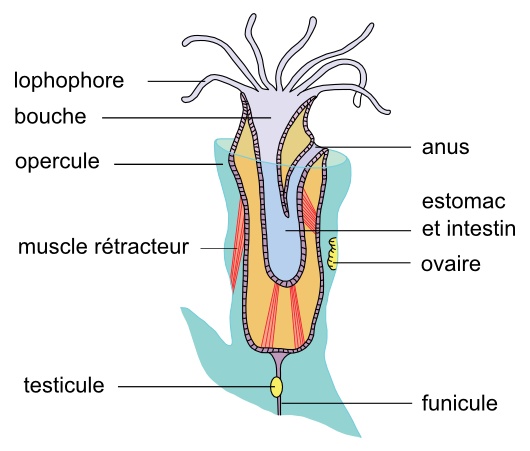
The anatomy of bryozoans
In the case of marine species, the crown of tentacles is circular in shape, while it takes the form of a horseshoe for freshwater species.
The body of the animal is primarily made up of a U-shaped folded digestive tract: it begins with the mouth located at the center of the lophophore and ends with the anus, which is located outside the crown of tentacles. Bryozoans are primitive animals lacking respiratory and circulatory systems. The various exchanges occur through diffusion.
Some scientific terms to describe our little friends, the bryozoans ! Bryozoans are triploblastic and coelomate metazoans ! Let's go back a moment… Metazoans because bryozoans are multicellular animals and triploblastic, as they have three germ layers at the embryonic stage: the ectoderm, endoderm and mesoderm. Finally, coelomate because bryozoans always have an internal cavity at the embryonic stage, which allows for the later development of the animal's vital organs.
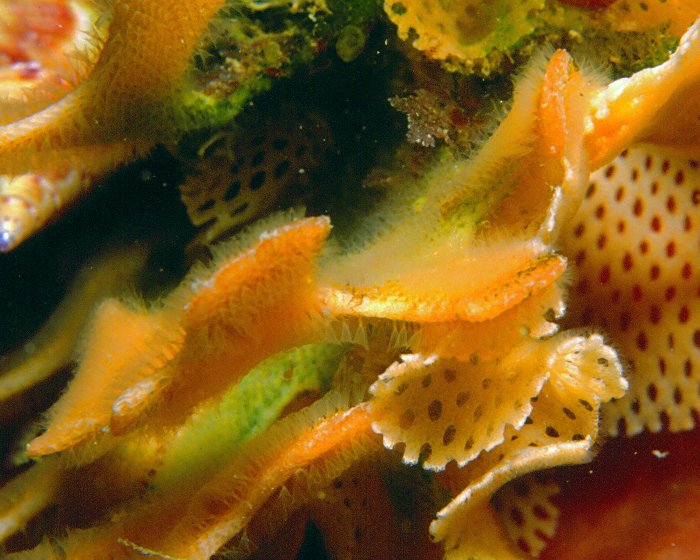
Focus on the polyps of Neptune's lace
Bryozoans live in colonies called zoaria. The colony is made up of a multitude of rigid cavities called zooecia, within which each individual, called a zooid, lives. The zooid itself consists of two parts: the cystid and the polypide or polyp.
Grouped together, bryozoans form colonies with very varied shapes, but characteristic of a given species. Sometimes encrusting, the colonies cover the entire substrate or sometimes they stand upright in the water in tubular form or as branched structures.
Geographic range
Bryozoans are widely distributed and can be found in all oceans and seas across the globe. The warm waters of tropical oceans and seas likely host the greatest variety of bryozoan species !
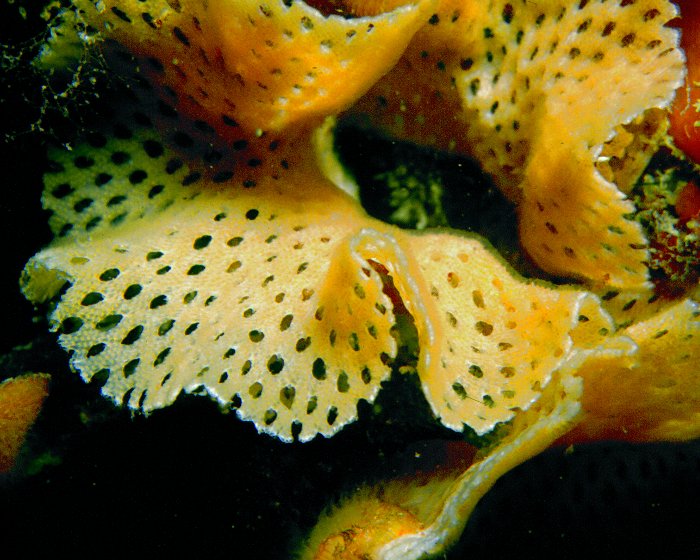
A bryozoan colony: Neptune's lace
Under our latitudes in the Mediterranean sea, one of the most well-known bryozoans is certainly Neptune's lace !
Habitat
Bryozoans live in colonies fixed to almost all types of substrates. This substrate can be mineral, such as rocks, sandy bottoms, wrecks or vegetal, like algae. It is also possible to find them fixed on sponges or even gorgonians.
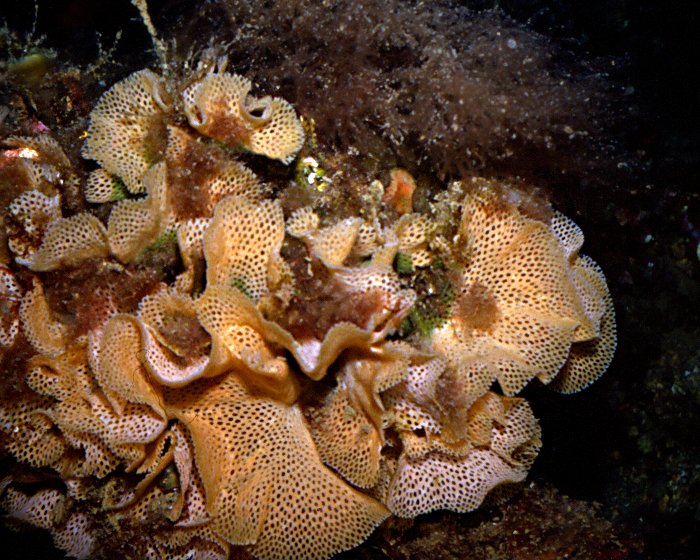
Neptune's lace gets its name from the shape of its colony !
Bryozoans particularly favor areas sheltered from light !
Diet
Bryozoans feed on particles and microorganisms suspended in the water through passive filtration of seawater.
Reproduction
Bryozoans exhibit:
- sexual reproduction, which results in the birth of a new zooid after fertilization and the development of the egg, followed by a larva
- asexual reproduction through the budding of a new zooid.
Did you know ?
Bryozoans are preyed upon by many predators ! Among them are numerous mollusks, including nudibranchs, sea urchins and certain crustaceans.
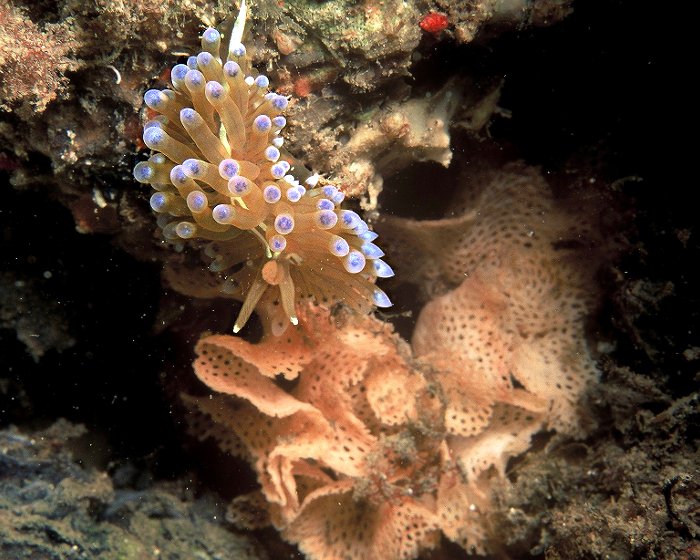
A Neptune's lace is preyed upon by the antiopelle, a nudibranch !
Some species of bryozoans could prove to be very invasive, like the case of the bryozoan Trieellaria inopinata, which made its first appearance in Venice in 1982! Since then, this bryozoan has been reported at various locations along the Atlantic coasts of Europe. Several hypotheses have been proposed to explain the initial vector of this bryozoan's appearance: transported by pleasure boats, commercial ships, or live mollusks imported and introduced into the natural environment for commercial purposes… the mystery remains !
Tips for observing
Be careful, some species of bryozoans can be mistaken for corals, such as false coral (Myriapora truncata).
Minuscule, the bryozoan is imperceptible ! Grouped into colonies, bryozoans appear in various shapes and forms, much to the delight of divers !
Some marine bryozoans to discover
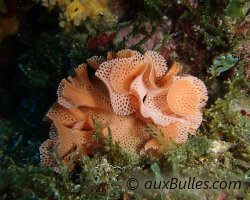
Neptune's lace
(Reteporella grimaldii)
(Reteporella grimaldii)
Our latestUpdates
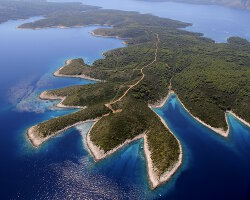
Friday, January 10th 2025
Hvar island
Hvar, a jewel of the Adriatic, captivates with its turquoise waters, wild coves and fragrant lavender fields. Between medieval villages, lively ports, and lush hills, Hvar island offers the perfect mix of relaxation, culture and breathtaking landscapes. Ideal for sun, sea and authentic experiences.
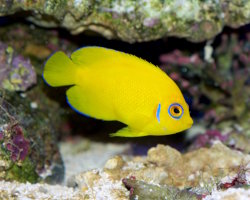
Thursday, January 9th 2025
The lemonpeel angelfish
The lemonpeel angelfish is a small, brightly colored reef fish found in the tropical waters of the Indo-Pacific ocean. It inhabits shallow coral reefs, sheltering among corals and rocky crevices.

Friday, December 19th 2025
The magic of Christmas decorations
Discover Christmas decorations in Florida: giant trees, illuminated palm trees, magical light displays and tropical settings to experience the holiday magic under the sun.
Photo of the Day

Platax à longues nageoires
(Platax teira)
(Platax teira)
